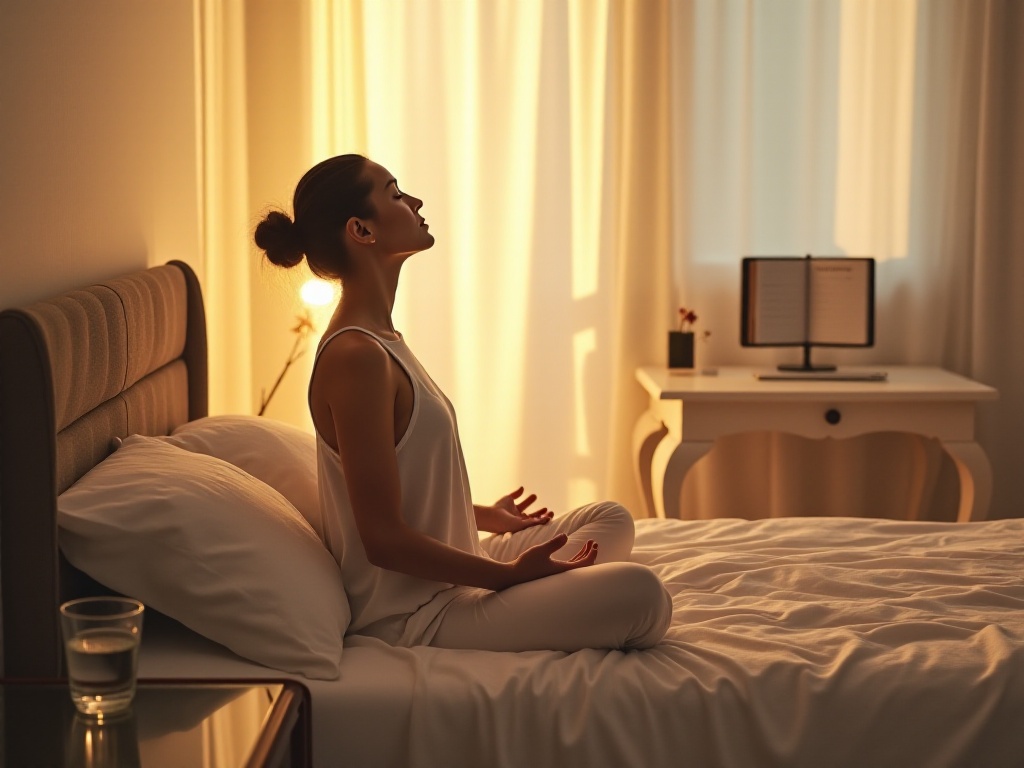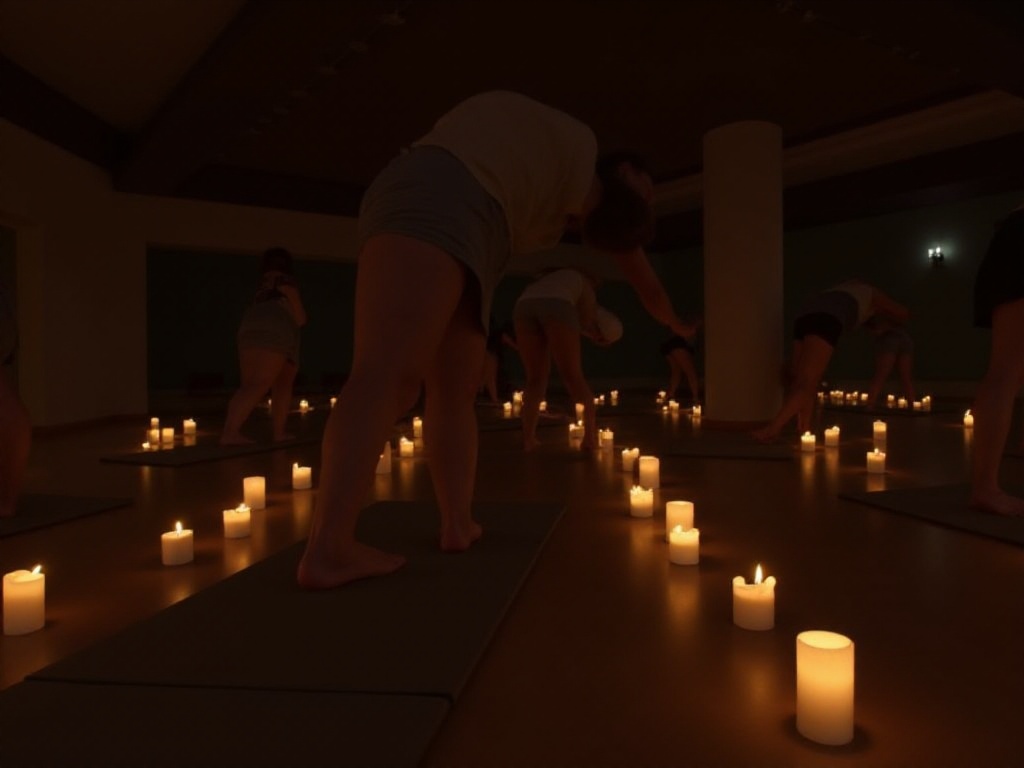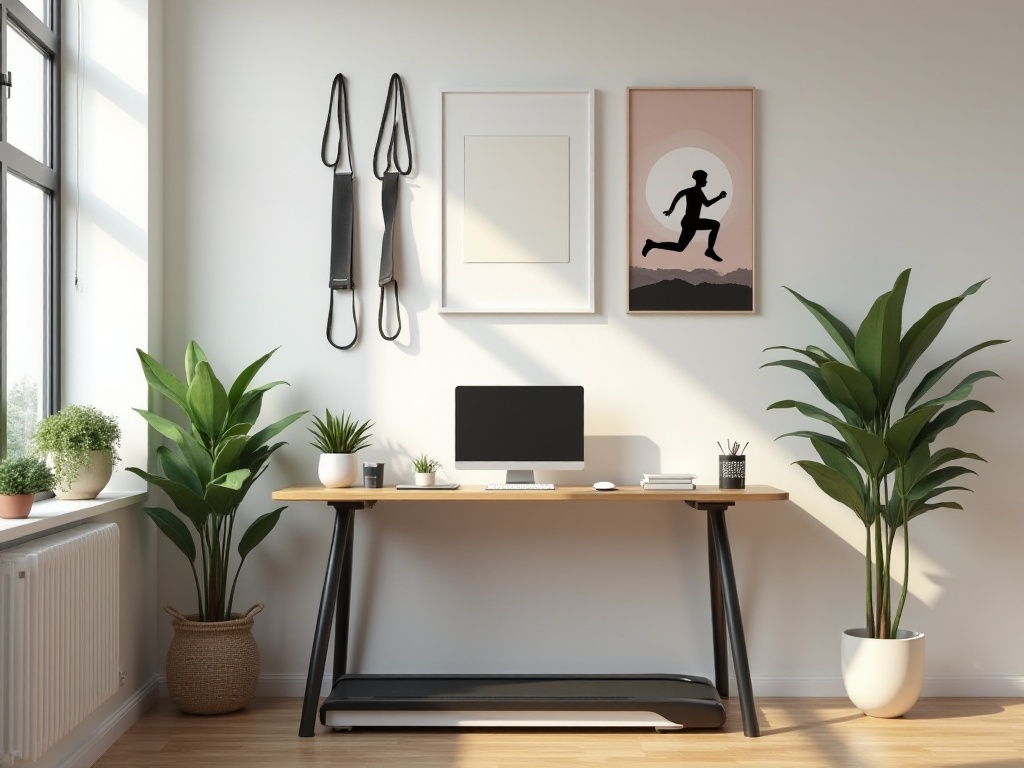Five-Minute Morning Routine
Overview
When you wake up in the morning with a foggy mind, your body needs time to fully awaken. A brief but efficient morning routine can help you quickly get into gear and boost your productivity and health throughout the day. Spending five minutes each morning on simple activities can help you transition from sleep to wakefulness and prepare for the day ahead.
Specific Steps
Hydration
When you first wake up, your body is slightly dehydrated, so quickly drink a glass of warm water. Drinking water not only replenishes lost fluids but also helps activate your bodily functions. Try keeping a glass of water by your bedside and drinking it first thing after waking up. Warm water helps activate your digestive system, cleanses your mouth, and removes bacteria that accumulated during sleep. This water also boosts your metabolism and keeps you hydrated throughout the day.
Meditation or Breathing Exercise
Next, do one minute of meditation or deep breathing exercises. Breathe deeply, inhale, exhale, allowing your mind and body to calm down and find inner peace. You can close your eyes and breathe deeply, letting your heartbeat gradually steady. This practice not only helps you stay alert and focused but also reduces stress and enhances emotional stability. Meditation or deep breathing is like hitting a reset button for your brain, helping clear negative emotions from yesterday and preparing you mentally for the new day.
Gratitude Journal
Now, take out your journal or phone and write down three things you're grateful for. This not only makes your mood more positive but also sets a positive foundation for your day. You can write about small things like "the weather is nice today" or "I have a good job." These small expressions of gratitude will keep you smiling and in good spirits all day. Research shows that gratitude practice can significantly increase happiness and reduce symptoms of anxiety and depression. Daily gratitude journaling isn't just a recording tool; it's an effective method for cultivating a positive mindset.
Quick Exercise
Next, do a set of 20 push-ups or other quick exercises. Don't think of it as tiring; actually, it gets your blood flowing and activates your muscles and nervous system. Push-ups aren't just for fitness; they're a great way to quickly wake up your body. This quick exercise can increase your heart rate, stimulate your body into action mode, and boost your metabolism. After these exercises, you'll feel energized and ready to face the new day.
Schedule Preview
Finally, spend a minute previewing your schedule for the day. Knowing what you need to do is crucial for mental preparation. It's like understanding the battlefield before going to war, helping you face the day's work and life with more confidence. You can quickly scan your calendar or to-do list to understand today's key tasks and meeting arrangements. This helps you plan your time and have a rough plan before starting work, reducing unnecessary confusion.
The 20-20-20 Rule

Overview
We spend all day staring at computer and phone screens, which isn't good for our eyes. Extended close-up viewing can lead to eye fatigue and potentially vision decline. The 20-20-20 rule is designed to reduce the strain of prolonged eye use and help maintain eye health.
How to Practice
Look Far Every 20 Minutes
Every 20 minutes, you need to rest your eyes for 20 seconds by looking at something 20 feet (about 6 meters) away. This isn't just giving your eyes a break; it helps balance your vision between near and far distances. I find this technique very useful, especially for people who work at computers all day. Looking into the distance not only relaxes your eye muscles but also reduces the occurrence of dry eye syndrome. Try looking out the window or at a distant view in your office during work breaks to enjoy a visual rest.
Eye Relaxation Techniques
These 20 seconds of rest aren't just about looking far; they also allow your eye muscles to relax and reduce digital eye strain. Imagine your eyeballs are like a taut bowstring, and the 20-20-20 rule is like relaxing that string, allowing your eyes to return to their natural state. During these 20 seconds, you can gently close your eyes, do some slow blinking exercises, or gently massage the muscles around your eyes. These simple actions can help your eyes get true rest.

The Pomodoro Technique
Overview
Do you feel constantly entangled in various tasks with not enough time? The Pomodoro Technique is tailored for you. By breaking work time into short intervals, it helps you manage time more effectively and increase efficiency. Using this method, you can better focus your attention, reduce procrastination, and improve work quality.

Practice Guide
Work Intervals
Set a 25-minute timer and fully immerse yourself in work. After 25 minutes, take a 5-minute break. This is like giving your brain a signal that it's time to work and rest. During these 25 minutes, you need to focus on one task as much as possible and avoid any distractions. This short period of concentrated work allows you to complete more tasks in limited time and avoid prolonged inefficient work.
Break Time Arrangement
After completing four 25-minute work cycles, you can enjoy a 15 to 30-minute long break. Think of this long break as a big reward for your brain, giving you time to do other things, have a snack, or simply do nothing and completely relax. Long breaks allow you to fully detach from work and give your brain a thorough rest. Use this time to walk around, stretch, or simply close your eyes and rest.
High-Intensity Interval Training (HIIT)

Overview
If you find traditional fitness methods too monotonous, High-Intensity Interval Training (HIIT) might be what you're looking for. It achieves efficient fat burning and cardiovascular improvement through alternating short periods of high-intensity exercise with recovery periods. HIIT not only raises your heart rate in a short time but also maintains a high metabolic rate long after exercise, helping you burn fat more effectively.

Routine Training
Sprinting and Walking
A simple HIIT workout involves sprinting for 30 seconds, then walking or jogging for 30 seconds, repeated for 15 to 20 minutes. This process is like alternating your body between limits and recovery; you'll feel your heart rate increase and then gradually settle down. Sprinting activates your cardiovascular system and raises your heart rate, while walking or jogging allows your body time to recover. This alternating exercise pattern not only improves cardiovascular function but also burns many calories in a short time.
Other High-Intensity Exercises
HIIT can be adapted to various forms of exercise, such as burpees, jumping jacks, or even cycling. Each movement requires you to give your all in a short time, then adjust your breathing and heart rate during recovery periods. This method not only improves your cardiovascular function but also helps you burn more calories in a short time. Burpees work out your entire body, jumping jacks improve coordination and explosive power, while cycling is a joint-friendly high-intensity exercise.

Yoga for Flexibility
Overview
Yoga isn't just about stretching; it can unite body and mind, enhance flexibility, strength, and balance. Through yoga, you can improve your body's flexibility, reduce stress, and even improve sleep quality. Yoga practice isn't just physical exercise; it's also mental relaxation.
Recommended Poses
Downward Dog
Downward Dog is a very classic yoga pose. It can stretch your entire back, legs, and arms. Maintain this pose for several deep breaths, and you'll feel your whole body stretching and relaxing. This pose can strengthen your arms, stretch your spine, improve spinal flexibility, help adjust your breathing, and reduce stress.
Forward Fold
Forward Fold is another pose that can stretch your spine and leg muscles. Maintain this pose for several breaths, and you'll find your flexibility gradually increasing. Forward Fold not only stretches your leg muscles but also helps improve spinal flexibility and reduce back pain. Additionally, this pose can help you relax body and mind, relieving tension caused by stress.
Pigeon Pose
Pigeon Pose is particularly beneficial for the hips and inner thighs. Maintain this pose for several breaths, and you'll feel your body gradually opening up and becoming more flexible. This pose effectively opens your hip joints, reduces tension in the hips and lower back, and helps improve sitting and walking posture.
Resistance Band Training
Overview
Resistance band training is a simple and effective method for building strength that doesn't require much equipment. It can help you build muscle strength while improving joint mobility. Resistance band exercises are versatile, can target different muscle groups throughout the body, and are suitable for people at all fitness levels.
Exercise Examples
Bicep Curls
Stand on the resistance band, grip both ends with palms facing up, then curl your arms upward. It's like lifting a glass of water; this exercise works your biceps. Bicep curls not only strengthen your arms but also improve elbow joint flexibility. This exercise can easily be done at home without any professional equipment.
Squats
Place the resistance band under your feet, hold the band at shoulder height, then perform squats. As you squat down, you'll feel the resistance band stretching your leg muscles. This training not only strengthens your legs but also improves your joint mobility. Squats are a full-body exercise that works your thighs, glutes, back, and other areas while improving your balance.
Dear readers, these life hacks and fitness tips are what I've summarized through practice and learning. I hope they provide some inspiration and help for you. You can try these methods and see how they change your life. Don't forget, if you have any questions or want to share your experiences, feel free to leave a comment. Finally, I'd like to ask you a question: Do you have any unique life hacks you'd like to share with everyone?







